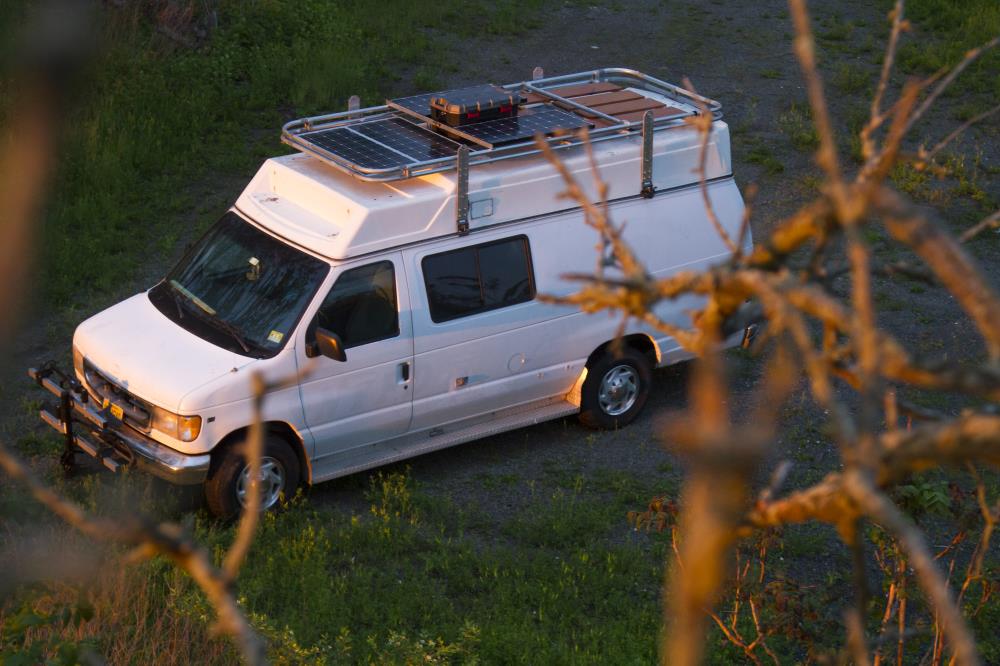How to Convert an Existing Grid-Tied Solar System to a Hybrid Solar System
Each year more Australian's discover the benefits of solar power as a low-cost and eco-friendly energy source.
One of the first decisions a customer makes before switching to solar power is whether they want a grid-tied solar power system or an off-grid system.
Both grid-tied and off-grid systems have pros and cons, but if you want the best of both worlds, the ideal option is often a hybrid solar system.
Many households will start with one solar power system before realizing they want the benefits of both. Other people may have always wanted a hybrid system but were waiting for the perfect time to upgrade.
Thankfully, it's now cheaper than ever to convert a grid-tied solar system to a hybrid solar system with solar batteries decreasing in cost. There are now several possible ways to integrate battery power and switch to a hybrid solar system.
Read on to learn about the many benefits of hybrid solar power systems and how you can convert your solar setup.
What is grid-tied solar power?
A grid-tied solar system is connected to the electrical power grid and a utility provider. The solar power system is reliant on the utility grid to produce using solar power. A grid-tied system can funnel excess energy back to the utility provider for later usage, net metering (Feed-In-Tariffs), or other clean energy credits.

Pros of grid-tied solar power:
- Access to government and utility provider initiatives and rebates
- Guaranteed energy even in poor weather with little sunlight
- Access to state-issued solar rebates or financial incentives
- Different energy providers offer access to feed-in tariffs (FITs) or 'refunds.'
- Lowered electricity bills
Cons of grid-tied solar power:
- Some costs for electricity from a utility provider
- Tied to one location, unable to travel
- Must be professionally installed by a solar contractor to benefit from FITs
What is off-grid solar power?
Off-grid power is a system that operates independently of any utility provider. Many people choose off-grid systems as a lifestyle choice so they can live in remote areas, travel in a camper or van conversion, or be completely free of their energy bills once and for all. Off-grid systems need to produce all the electricity necessary to power your vehicle or home. If there is a shortfall in energy produced, you may be without power unless you use a battery bank alongside your system to store power.

Pros of off-grid solar power:
- Entirely eco-friendly power source
- Free from the grid to live anywhere you like
- Opportunities for mobility and travel
- Low cost, with no electricity bills
- DIY installation is possible
Cons of off-grid solar power:
- Limited access to state-issued solar rebates or financial incentives
- Entirely reliant on sunlight levels which can be unpredictable in some regions
- No access to feed-in tariffs
- Requires a battery or battery bank to store power
What is a Hybrid solar system?
A hybrid solar power system combines the best of both grid-tied and off-grid systems. A hybrid solar power system is grid-tied but also uses battery backup to store solar power. So, you can keep your own solar power for emergencies and benefit from feeding surplus electricity into the main grid.
Hybrid systems allow households to be almost self-sufficient while benefiting from feed-in-tariffs and other grid-tied benefits. Usually, a grid-tied system will power your home during sunlight hours, then pull energy from the grid at night or on long winter days. But with a hybrid system, you can use the stored energy in your battery in the evening or night instead of having to buy it from the utility grid at a higher price.
A battery is also handy for hybrid models in an emergency when a power outage occurs; the solar battery will provide power. In this situation, the solar battery will turn on and disconnect from the distribution panel.
Pros of a hybrid solar power system:
- Low cost, with the potential to eliminate electricity bills
- Access to government and utility provider initiatives and rebates
- Always have power in any situation
- Access to state-issued solar rebates or financial incentives
- Different energy providers offer access to feed-in tariffs (FITs) or 'refunds'
Cons of a hybrid solar power system:
- Tied to one location, unable to travel
- Must be professionally installed by a solar contractor to benefit from FITs
- Requires investment in a battery or battery bank to store power
How Solar Batteries Work
A solar battery, or battery bank, can be used with both off-grid and hybrid solar power systems. The solar batteries are charged using sunlight and your solar panels. The battery then stores power for your household to use at a later date.
Solar panels collect energy and turn it into Direct Current (DC) electricity, an inverter that converts the energy into AC electricity that most household electronics and appliances use.
During the day sunlight can directly power your home, while a solar battery can provide power at nighttime. A hybrid solar system allows you to use up all the power stored in your battery then draw power from the electrical grid. This system means you will never run out of power.
How it works: A hybrid solar system works differently from grid-tied or off-grid systems. The solar panels work by drawing energy from the sun then sending solar power to your inverter. The inverter then sends solar energy to your home. Any extra solar energy not needed to power your home will go to the battery for storage. The battery or battery bank can then provide power whenever the solar panels are not producing energy, such as during the night.
If there is still leftover solar power being produced after these steps, that energy will be sent to the grid and eligible for any solar power rebates. To see if you're eligible for any Feed-In-Tariffs or rebates, check out our post about solar power rebates and incentives offered in Australia by state.
What solar batteries are compatible with your panels?
The best solar batteries for your hybrid system will depend on your initial setup, but you should always choose your batteries wisely to get the best output.
A hybrid solar system can put a lot of pressure on batteries, so you will need high-quality batteries that can handle fast discharge rates while operating efficiently. An off-grid solar power system can store enough energy to last a few days, but a hybrid solar power system will be used more regularly and often charged and discharged daily.
Lithium batteries are best suited to this regular usage and are already the dominant choice for electric cars and most consumer electronics. Compared to lead-acid batteries, lithium batteries are lighter, smaller, low-maintenance, and don't emit hydrogen gas. However, as a high-performance battery, they do come with a higher price tag.
Adding a battery to your existing grid-tied solar system
It's possible (and cheaper than ever before) to convert a grid-tied solar system to a hybrid system.
Technically, you can even add a battery by yourself, saving on installation costs, but we wouldn't recommend a DIY solar installation approach. Often, grid-tied systems require installation to be completed by professionals in order to qualify for any rebates.
The conversion process isn't that easy if you're not experienced in electrical systems - hybrid conversion requires more than simply hooking up a battery to your system. Some solar setups may be harder to convert than others.
Grid-tied systems use solar inverters designed to convert direct current (DC) from solar panels for household appliances. However, these inverters weren't intended to be integrated with a battery bank. Instead, you'll need to add new components so that your inverter will work with your solar battery.
Here are the common ways to convert your system:
Solar buffer battery
The simplest way to connect a battery to your grid-tied system is to use a solar buffer battery. This method connects the battery between the solar panels and the grid-interactive solar inverter.
Electric current flows into the solar battery during the day. But at night, the DC will flow from the solar battery to the inverter and then to your house switchboard.
This method is a low-cost, efficient option that doesn't require any conversions from AC to DC. Plus, there is no need to add any additional inverters.
However, this is not the best option if you want to use your battery for emergency blackouts. In this system, the solar inverter doesn't recognize that a battery is present. The grid-interactive inverter will typically shut down when the grid is not present.
Storage-Ready Solar System
Some people will start off with a storage-ready system to add batteries at a later date. With battery prices dropping, now's the right time to add that solar battery like you always wanted to. If you already have the storage-ready system, it will be easy to add a battery.
AC Coupling
AC coupling is one of the easiest ways to retrofit your solar power system. Using an AC-coupled system, an off-grid inverter and battery bank can be paired with a grid-tied inverter. Grid-tied inverters will always rely on the power grid to operate.
Grid-tied inverters sense the grid voltage and frequency - they will completely shut off if they fall out of range. But the addition of an off-grid inverter can provide the system with a second power source. This method will effectively trick your system's grid-tied inverter into staying online.
This conversion method allows you to charge your solar batteries while also running your essential electronics during a power outage.
It's an easy method, but one that can get expensive. The process of choosing an inverter and battery can also be complicated as there are strict sizing guidelines. If the new components aren't well suited or undersized, then your system will perform poorly or at all. Additionally, the electricity that runs through the solar battery will require an additional conversion from AC to DC energy - and back again - which will reduce efficiency.
DC Coupling
With this method, your solar array is connected directly to the battery bank via a charge controller. The DC method works similarly to an off-grid system and requires the addition of charge controllers.
DC coupling has pros and cons, but it works well with a broader range of battery bank sizes and off-grid inverters. One of the downsides of the DC coupling method is that you will need to switch the system from grid-tied to off-grid mode manually. The system can't be programmed, you must physically make the change to start charging the batteries. The battery bank won't recharge if you forget or aren't home to make the change.
Future-proofing
If you're considering a new solar panel installation, it may plan to future-proof your system. With Australian electricty prices on the rise, you'll likely benefit from the cost-savings of a hybrid system in the future. If you're installing new solar panel kits, it's worth getting a storage-ready solar system, so your options are open to add batteries later. When seeking installer quotes, ask how batteries can be integrated.
Make the switch to hybrid solar power
The high cost of solar batteries was once a deterrent to hybrid models. But as battery prices decline and become more effective, hybrid systems are growing into a more viable and popular option for many Australians.
A hybrid solar power system is a popular solar choice and is now arguably the best way to be in control of your power supply. With a hybrid system, you can be your own energy provider but benefit from an added safety net and any financial incentives that come from being connected to the electricity grid.






